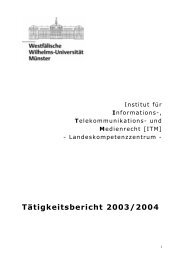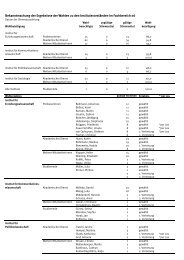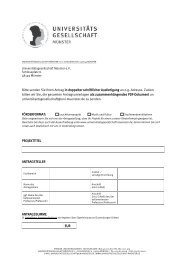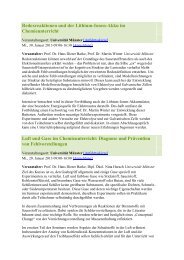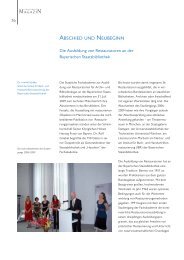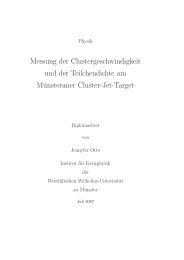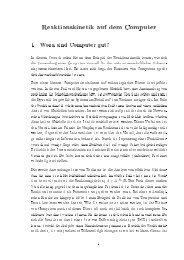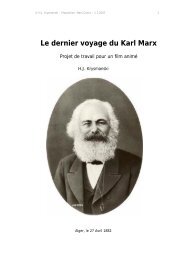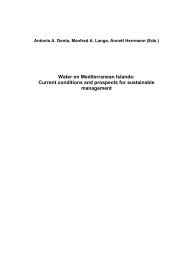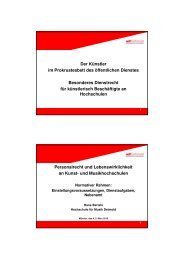oye GentleIllen Arabic Studies on Science and Literary Culture
oye GentleIllen Arabic Studies on Science and Literary Culture
oye GentleIllen Arabic Studies on Science and Literary Culture
Create successful ePaper yourself
Turn your PDF publications into a flip-book with our unique Google optimized e-Paper software.
THE DAWÄDÄR'S HUNTING PARTY 299<br />
low. At the very end of the page, the writer added another headline,<br />
saying: al-Mawlä al-Shaykh al-Imam al-Adib al-Fäqil]amäl al-Din Abü<br />
'AbdAlläh b.al-Shaykhal-Imäm al-Mu~addith Mu~ammad Ibn Nubäta.<br />
The words 'Ibn Nubäta' are crossed out <strong>and</strong> substituted by the words<br />
'Mu~yi '1-Din FaqlAlläh'. This error can be explained by the following<br />
hypothesis: The urjüza is still part of the secti<strong>on</strong> comprising texts by al-<br />
Shihäb Ibn Fac;llAlläh. The writer, however, realised that the following<br />
text is a hunting urjüza. At this time, the most famous hunting urjüza,<br />
was, of course, Ibn Nubäta's poem, a text that is also induded in this<br />
very collecti<strong>on</strong> a few pages later. Further, the writer must have realised<br />
that severalleaves of his source were in disorder. This is very obvious in<br />
the text of al-Qatr al-Nubäti. Obviously, he thought that Ibn Nubäta's<br />
hunting urjüza had already started even in these earlier pages. Therefore<br />
he added the headline appropriate for this text. Later, perhaps when he<br />
reached f. 47b, he realised his error. On that page, Ibn Nubäta's urjüza<br />
begins, <strong>and</strong> it is introduced with exactly the same headline as the bottom<br />
of f. 42a.Having realised his error, the writer crossed out the words<br />
'Ibn Nubäta' <strong>and</strong> substituted them with the last words of the headline at<br />
the top of the page. Even so, he still did not realise that not <strong>on</strong>ly the end<br />
of the headline was wr<strong>on</strong>g, but also its beginning. I c<strong>on</strong>jecture that the<br />
original headline at this place was either a simple wa-Iahü (ayqan) or a<br />
repetiti<strong>on</strong> of the headline at the top of the page. The writer of the title<br />
page, which c<strong>on</strong>tains a list of the principle texts indud:ed in the Tadhkira,<br />
refers to our text as Urjüzat Ibn Faql Alläh fi 'l-$ayd.<br />
This is corroboratedby internal criticism. The poem presented here<br />
cannot be a work of Ibn Nubäta. A comparis<strong>on</strong> betweenthis poem <strong>and</strong><br />
Ibn Nubätas Farä'id al-Sulük reveals aldear stylistic c<strong>on</strong>trast. Whereas<br />
Ibn Nubäta repeatedly uses the tawriya (double entendre), this stylistic<br />
device hardly plays a role in the urjüza published here. Instead, its<br />
author makes ample use of aBkinds ofjinäs. This corresp<strong>on</strong>ds exactly<br />
to what we are told by Ibn I:Iijjaal-I:Iamawi,who menti<strong>on</strong>s al-Shihäb<br />
Ibn Fac;llAlläh am<strong>on</strong>g the poets who possess no virtuosity in the field<br />
of the tawriya <strong>and</strong> make <strong>on</strong>ly sporadic use of it.34In favouring jinäs<br />
instead of the tawriya, his style is doser to that of al-I:Iillithan to that<br />
of Ibn Nubäta. Other sources corroborate that the urjüza is a literary<br />
34 Ibn I:Iijja,Khizänat al-adab, III, p. 522.



